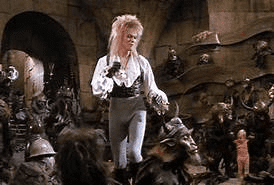Disir
Platinum Member
- Sep 30, 2011
- 28,003
- 9,607
- 910
On July 14, 1518, somewhere in the French town of Strasbourg, a woman named Frau Troffea stepped out of her home and began dancing. Soon, she had a large crowd around her. Some clapped, some laughed while some just gazed in awe. The event was intriguing since Troffeau had no control over her dancing. Neither did she start out of choice, nor did she know how to stop. Rather, she was suffering from what came to be known as the ‘dancing mania’ or ‘dancing plague’. To everyone’s horror, Troffea kept dancing for six days. She would collapse out of exhaustion each night, her shoes soaked in blood, but would wake up the next morning only to start dancing again.
In Europe of the 16th century, dancing mania was not a new disease. It had been in existence since the seventh century, occurring in phases with long gaps in between. It is said to have reached its peak in the 15th and 16th centuries though, infecting thousands of people, and killing several as well.
In modern medical terms, the dancing mania of medieval Europe was a psychogenic disease – a kind of illness in which a physical abnormality occurred due to psychological factors. Though no instance of dancing mania has been observed since the 19th century, other psychogenic diseases are common in contemporary times in the form of seizures or body aches caused by sudden shocks or prolonged periods of emotional or mental distresses.

 indianexpress.com
indianexpress.com
I came across another article on this. Mass hysteria is fascinating.
In Europe of the 16th century, dancing mania was not a new disease. It had been in existence since the seventh century, occurring in phases with long gaps in between. It is said to have reached its peak in the 15th and 16th centuries though, infecting thousands of people, and killing several as well.
In modern medical terms, the dancing mania of medieval Europe was a psychogenic disease – a kind of illness in which a physical abnormality occurred due to psychological factors. Though no instance of dancing mania has been observed since the 19th century, other psychogenic diseases are common in contemporary times in the form of seizures or body aches caused by sudden shocks or prolonged periods of emotional or mental distresses.

The dancing plague that struck many in medieval Europe
In the 15th and 16th centuries, little was understood about the science behind the dancing plague. The societies of the time offered explanations, ranging from demonic possession, wrath of God to bites of spiders.
I came across another article on this. Mass hysteria is fascinating.



